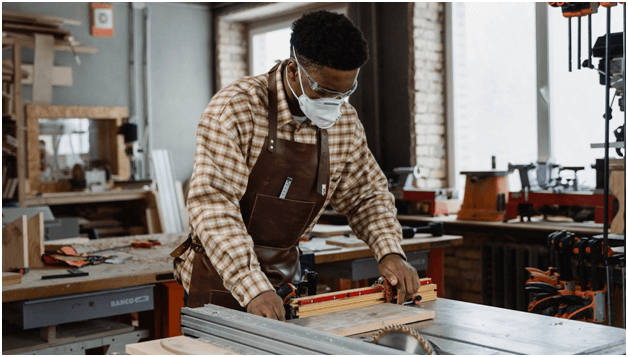Effective Drywall Repair Techniques to Recover Your Walls
Effective Drywall Repair Techniques to Recover Your Walls
Blog Article
Drywall Setup Facilitated: Tips for Perfect Results
Drywall installation is usually regarded as a difficult job, yet with the right approach and expertise, it can come to be a convenient endeavor. Grasping techniques for reducing, hanging, and finishing drywall can substantially impact the outcome.
Selecting the Right Materials
Choosing the ideal materials for drywall installation is crucial to attaining a durable and cosmetically pleasing finish. drywall installation. The primary element, drywall sheets, commonly come in numerous densities, with 1/2-inch sheets being basic for indoor wall surfaces. For locations calling for added dampness resistance, such as kitchen areas or shower rooms, take into consideration using green board or cement board, which are specifically created to hold up against moisture

In addition, picking the right bolts-- either screws or nails-- is vital for securing the drywall to the framework. Drywall screws are typically favored for their holding power and lowered danger of standing out. Last but not least, consider the complements such as guide and paint, which not only boost the look however additionally shield the drywall from wetness and wear.
Preparing the Setup Area
Prior to beginning the drywall setup process, it is crucial to prepare the setup location completely. A tidy work space minimizes the risk of damage to existing things and permits for effective activity during setup.
Following, evaluate the wall surfaces and ceiling for any kind of blemishes, such as cracks, holes, or mold. Address these problems beforehand; patch any kind of problems and allow adequate time for repairs to completely dry. Additionally, guarantee that electric outlets, switches, and plumbing are correctly placed and accounted for, as this will affect drywall placement.
Take into consideration the environmental conditions too. A steady temperature and humidity degree are important for optimal adhesion and performance of the drywall materials. If necessary, utilize a dehumidifier or heater to create suitable problems.
Trimming and Hanging Drywall
The trick to reliable drywall installation depends on the precise cutting and hanging of the panels. Begin by determining the space accurately, taking right into account any blockages such as electric outlets or windows. Utilize a straight side and an energy blade to rack up the drywall along your dimensions, then snap it along the racked up line for a tidy break. For more elaborate cuts, such as around outlets, a drywall saw can be used for accuracy.

Constantly work from the top down and delegated right, guaranteeing that you keep a staggered pattern to enhance security. Correctly hanging the drywall establishes the structure for a smooth finish, eventually bring about remarkable lead to your drywall job.
Insulation and Mudding Methods
While appropriate cutting and hanging of drywall sets the stage, the following important step includes mastering taping and mudding methods to ensure a seamless finish. Taping is necessary for enhancing joints and avoiding splits; it involves embedding tape right into the used joint compound (mud) Start with a high quality fiberglass or paper tape, using the tape over the joint and pushing it into the damp mud using a taping knife, guaranteeing no air bubbles continue to be.
When the tape is in area, use a thin layer of joint compound over the tape, feathering the sides to produce a smooth transition to the drywall surface area. Allow this layer to dry entirely before sanding it lightly to remove imperfections. Repeat this procedure, using additional coats of mud as needed-- commonly 2 to 3 coats-- while gradually Our site broadening the application location with each layer to achieve a seamless look.
After the final coat dries, that site sand the surface area with a fine-grit sandpaper till smooth. drywall repair. Remember to use a mask during fining sand to avoid inhaling dirt particles. Grasping these taping and mudding methods is essential for attaining a professional-quality coating in your drywall setup
Ending Up Touches for Excellence
Achieving a perfect drywall installation surpasses mudding and taping; it finishes in the finishing touches that raise the overall look. These last actions are vital in guaranteeing a professional-grade coating that enhances the aesthetic appeals of your area.
Begin by fining sand the dried out joint substance to produce a smooth surface area. drywall installation. After fining sand, wipe down the wall surfaces with a moist fabric to eliminate any dust particles, making sure navigate to these guys a clean surface area for paint.
Next, use a primer especially made for drywall. This action is vital, as it helps secure the joint compound and supplies a consistent base for the topcoat. Once the guide dries, examine for any type of imperfections, and touch up as needed.
Verdict
In verdict, successful drywall setup rests on the cautious option of products, complete prep work of the setup area, and exact execution of reducing and hanging methods. Mastery of taping and mudding processes is necessary for achieving a smooth finish. In addition, focus to ending up touches, consisting of priming and touch-ups, ensures a professional-grade outcome. By sticking to these standards, the high quality of workmanship can be substantially improved, adding to the overall aesthetic and functionality of the room.
Drywall setup is often viewed as an overwhelming job, yet with the right approach and expertise, it can end up being a manageable undertaking.Choosing the suitable products for drywall installment is crucial to achieving a sturdy and visually pleasing finish.Before beginning the drywall installation process, it is vital to prepare the setup area completely. Mastering these taping and mudding methods is essential for attaining a professional-quality coating in your drywall installation.
In verdict, effective drywall setup hinges on the careful choice of materials, thorough prep work of the installation location, and accurate implementation of cutting and hanging methods.
Report this page